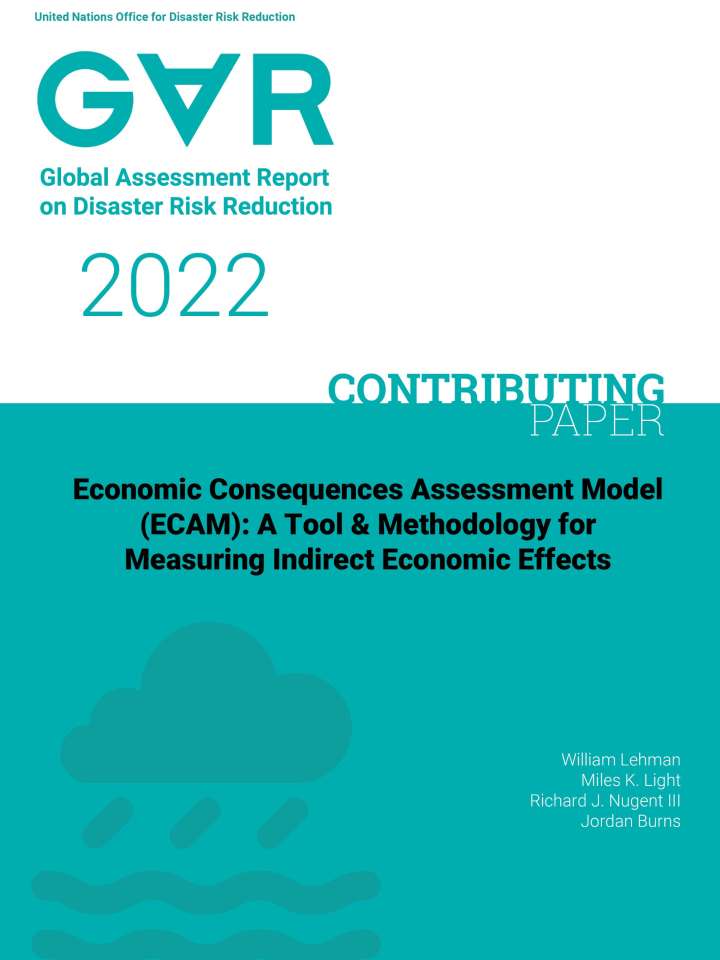Economic Consequences Assessment Model (ECAM): A tool & methodology for measuring indirect economic effects
This contributing paper explains how indirect economic impacts are computed, the necessary input data, and includes example applications for a hypothetical multi-dam breach, a hypothetical earthquake, and a hypothetical hurricane in the Caribbean (a non-US example). When measuring potential damages associated with a particular threat, there are both direct and indirect effects. Direct effects include physical structure damage and loss or displacement of life. Indirect effects capture changes to economic activity, such as lost business revenues, changes to household incomes, and employment losses. In some cases, the dollar value of indirect effects is larger than the direct effects.
This paper describes how these indirect economic effects can be computed using the Economic Consequences Assessment Model (ECAM). The outputs from the primary research from a disaster analysis can be utilized to determine the key inputs needed by the ECAM system. Using the physical damage estimates, the user can calculate the amount of productive capital damaged during the event and the share of the region’s population who are displaced.This approach has been applied to various hazard threats over the past 18 years, primarily in the United States. ECAM has gradually evolved into a mainstay planning tool by different government agencies, including the Department of Homeland Security, the US Army, the Bureau of Reclamation, and FEMA.
